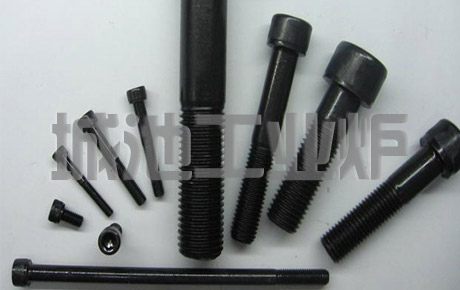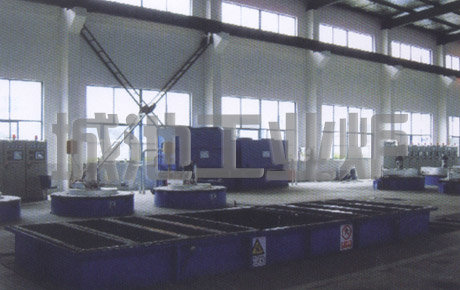Steam blackening/bluing heat treatment of steel
Steam blackening/bluing heat treatment of steel
Blackening / blueing is widely used in the machinery manufacturing industry. The commonly used blackening / blueing methods are low-temperature alkaline blackening / blueing and normal temperature blackening / blueing. Steam treatment is al
Abstract
- Promulgator: :ChengChi
- Send date:2020-05-15 15:59
Keywords:Iron and steel,steam,blackening,bluing,heat treatment,alkaline blackening,blackening at room temperature,oxidation,iron tetroxide,oxide film,furnace,out of the furnace,air cooling
Steam blackening/bluing heat treatment of steel
Blackening / blueing is widely used in the machinery manufacturing industry. The commonly used blackening / blueing methods are low-temperature alkaline blackening / blueing and normal temperature blackening / blueing. Steam treatment is also a surface oxidation treatment. It is to put the steel parts in the steam of 540-560 ℃, and form a blue iron oxide film on the surface, the thickness of which is 4-6um. The structure of this oxide film is fine and can be firmly attached to the metal surface.
The steam bluing process is as follows:
Install spreader-degreasing-clean water rinse-pickling-clean water rinse-clean boiling water rinse-surface inspection-install furnace for steam treatment-oil immersion treatment.
The process overview is:
1. Remove oil
Commonly used lye to remove oil, its formula: volume and mass, water balance. Remove oil temperature and time, and let the oil run out. Rinse with flowing cold water after degreasing, rinse the remaining liquid, the time is not less than 30
2. Pickling
The formula of pickling solution is: hydrochloric acid volume fraction, plus the total volume of hydrochloric acid urea, the rest is water, and the pickling time is about. Its purpose is to activate the metal surface.
3. Cleaning
After pickling the workpiece, rinse with cold water to remove the acid on the surface of the workpiece, and then clean it with clean boiling water to ensure that there is no dirt and water marks on the surface of the workpiece.
4. Steam treatment
Put the workpiece into the fixture, and put it into the steam blackening furnace when the furnace temperature is 350-370 ℃. After 10-15 minutes (the temperature of the work piece is estimated to be above 150 ° C to avoid steam condensation), the heater is energized and steam is then introduced. At this time, the exhaust valve should be fully opened, and the intake pressure should be maintained at 0.02-0.03MPa in order to exclude the air in the furnace. Exhaust gas for 10-15 minutes, adjust the exhaust valve, increase the furnace steam pressure to 0.03-0.05MPa, and the intake air pressure to 0.04-0.06MPa. The temperature is directly raised to 540-560 ° C, and the heat preservation is 60-90min, and the heat preservation time depends on the amount of furnace installed. The steam pressure remains unchanged during heat preservation. After the heat preservation is completed, the exhaust valve should be opened immediately, the inlet pressure can be increased appropriately, the power is turned off, the furnace is cooled to 300 ℃, the steam input is stopped, and the furnace is air-cooled.
If the furnace load is large, the color of the oxide film produced in one treatment is light, two steam treatments can be taken to deepen the color and improve the surface quality.
5. Oil immersion treatment
After the second steam treatment of the parts, take out the workpiece, cool it to about 100 ° C in the air, and immerse it in L-AN15 oil (or transformer oil, spindle oil, anti-rust oil, etc.) for 3-4 minutes.
The above is an overview of the operation of the steam bluing process. This method has a large furnace load and high efficiency, which is suitable for large-scale production.
It is the best application prospect among various bluing processes.
More Steam blackening/bluing heat treatment of steel:http://www.industrial-furnace.com/solution/steel_black.html







